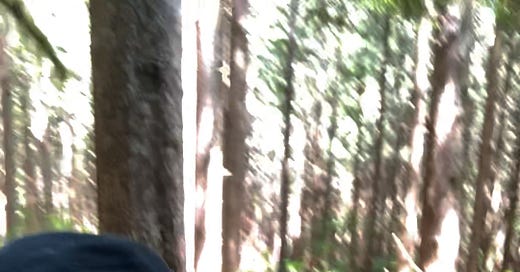Secondgrowth forest stands like this are frighteningly common throughout all of Turtle Island as a result of large-scale commercial logging operations, and as you can see...there’s not much living here, except for these tightly packed even-aged trees that all started growing at the same time.
While certain critters like birds or ungulates have been shown to enjoy some of open space created in the early years following a clearcut, once these artificially disturbed areas mature past a decade or two, the situation is quite the opposite. With the removal of large old trees and the complexity of vegetation present in an oldgrowth forest, there is an immediate lack of habitat for most of the life that would usually live here as well as generally drier conditions without roots or moss to slow the rate of water flow, and a tight canopy that doesn’t allow for any light to come through means virtually no berry-bearing shrubs or vegetation can grow here – this forest, is essentially a desert.
But through forest restoration work, we can bring more life back to these forests!
Thinning these trees allows for more space to move about or fly through the canopy, and for light to come in so that important food sources like huckleberries for birds and deciduous saplings for deer or elk can grow, along with mosses and a variety of shrubs, and downed logs that retain moisture and create habitat for a host of smaller critters. By thinning some of those trees higher up, we’ve created standing dead trees, or wildlife trees, that a variety of critters will use as both a home and a grocery store as it decays - first it’s bacteria and fungi that soften the wood, then insects which feed on that, followed by birds and small mammals that eat the insects and even den in the wood to raise their families.
By thinning these forests, we’ve created an ecosystem that’s closer to serving the ecological function of the one that existed here before, which helps them to heal, ultimately creating healthier landscapes for us all.












Share this post